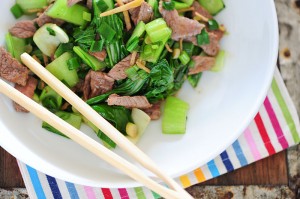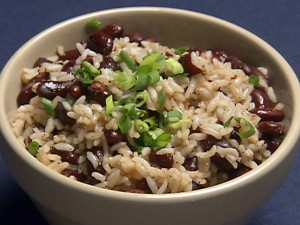How to Go Gluten-Free Without Contributing to the Billion Dollar Big Food Rip-Off
According to some experts, wheat is more like the staff of death than the staff of life these days. Due to genetic modifications of wheat over the past century (go HERE to learn how scientists “fixed” wheat during the '60s), the grain that appears in nearly every meal in America seems to be causing serious health concerns, particularly inflammation and autoimmune issues.
The problem is, gluten-free food is a billion dollar industry, and at the prices Big Food is charging for these specialty items, it’s easy to see how fast the bills can rack up.
You only need to stroll over to the gluten-free section of your grocery store to see that the cost of eating a diet free of wheat is absolutely outrageous. A loaf of Udi’s bread at my local market is $6. And it’s a tiny loaf – with little bitty pieces of bread and a lot fewer slices than a conventional loaf. The Udi’s white and whole grain loaves contain 14 slices. So, if you have 2 kids and 2 adults and all four of you eat a sandwich for lunch every weekday, you’re looking at a cost of nearly $20 – and that is just for the bread, assuming no one is super-hungry and wants 2 of the mini-sized sandwiches. This also assumes no one wants toast for breakfast or garlic bread with dinner.
And speaking of dinner – have you priced out quinoa pasta lately? Enough gluten-free pasta for one spaghetti dinner will run you about $4, vs traditional pasta, which would be closer to $1.
Big Food is cashing in on the gluten-free trend, as more and more people discover that wheat is causing health problems and attempt to go gluten free. In 2012, the Huffington Post reported on the billions of dollars being made off those who wanted to omit wheat from their diets.
The gluten-free foods market is expected to hit $4.2 billion this year, according to a new report by market research publisher Packaged Facts.
And at the rate it’s going, by 2017, gluten-free sales could grow to more than $6.6 billion, the report said. (source)That is simply astronomical, and it doesn’t have to be that way.
 As usual, corporate interests are taking advantage of a problem that was created by…you guessed it…corporate interests – back when they toyed around with wheat and irrevocably changed it to the toxin being sold today. Now they are “solving” the problem by charging quadruple for processed items that don’t contain government subsidized wheat, and they are taking advantage of people who’ve become ill from eating their previous incarnations of processed foods.
As usual, corporate interests are taking advantage of a problem that was created by…you guessed it…corporate interests – back when they toyed around with wheat and irrevocably changed it to the toxin being sold today. Now they are “solving” the problem by charging quadruple for processed items that don’t contain government subsidized wheat, and they are taking advantage of people who’ve become ill from eating their previous incarnations of processed foods.But, with prices at the cash register soaring to start with, how can anyone possibly afford to eat gluten free without a six figure income? It’s easy, and you don’t have to pad the pockets of Big Food.
Change how you eat.
The issue is, everyone wants to eat the same diet they’ve always eaten, just without the wheat. And that won’t work, at least not healthfully.
First of all, the gluten-free products are highly processed. In order to give people the familiar textures, lots of additives are necessary to simulate the airiness that results when wheat gluten is combined with a leavening agent. Here’s an ingredients list from a common gluten-free white bread.
TAPIOCA & POTATO STARCH, BROWN RICE FLOUR, MODIFIED TAPIOCA STARCH, WATER, NON-GMO VEGETABLE OIL (CANOLA OR SUNFLOWER OR SAFFLOWER), EGG WHITES, TAPIOCA MALTODEXTRIN, EVAPORATED CANE JUICE, TAPIOCA SYRUP, YEAST, XANTHAN GUM, SALT, BAKING POWDER (SODIUM ACID PYROPHOSPHATE, SODIUM BICARBONATE, CORN STARCH, MONOCALCIUM PHOSPHATE), CULTURED CORN SYRUP SOLIDS (NATURAL MOLD INHIBITOR), ENZYMES.While this list of ingredients isn’t as bad as the ingredients in a lot of conventional breads, you end up with a highly processed, low nutrition food item.
If you make it yourself, it is cheaper, but the list of ingredients that you need to make a loaf of homemade bread sans the wheat is lengthy, daunting, and still somewhat expensive. Here are the ingredients for one recipe that I found:
- white rice flour
- tapioca starch
- sweet sorghum flour
- buckwheat flour
- brown rice flour
- dry active yeast
- cane sugar
- salt
- guar gum
- xanthan gum
- ground ginger (adds flavor and acts as a natural preservative)
- apple fiber (a dry nutritional supplement, available at health food stores)
- egg whites, room temperature
- light olive oil
- apple cider vinegar
- lukewarm water
So what if, instead of buying all of these expensive products, you just switched to real foods that are gluten-free naturally?

Change what you eat. You don’t require all of these fancy substitutes when you go a different direction than the standard American diet. Instead thinking that you must have either wheat products or pretend wheat products, forget about those foods you’ve been eating. For starters, what are your favorite meals that don’t contain wheat products? What about a stir-fry over rice? Or a delicious salad? Or a steak with a baked potato? Why not hit the farmer’s market and get some delicious in-season produce while supporting local agriculture? (You can find a local farm or market HERE.)
 By changing your meal plan around and omitting these products altogether, you can eat nutritiously on a tight budget. Then if you decide to get one loaf of gluten-free bread per week to make your traditional Sunday morning French toast breakfast, you won’t be breaking the bank for just one splurge. It’s when you try to replace every bite of wheat that you’ve been eating with a gluten free counterpart from the health food aisle that you will eat your way into the poorhouse.
By changing your meal plan around and omitting these products altogether, you can eat nutritiously on a tight budget. Then if you decide to get one loaf of gluten-free bread per week to make your traditional Sunday morning French toast breakfast, you won’t be breaking the bank for just one splurge. It’s when you try to replace every bite of wheat that you’ve been eating with a gluten free counterpart from the health food aisle that you will eat your way into the poorhouse.For the carbohydrate lovers out there, please understand I’m not suggesting a low-carb diet. Carb-load to your heart’s content on:
- quinoa
- rice (learn more about rice HERE)
- amaranth
- buckwheat (despite the name, it is entirely different from gluten-containing wheat)
- Cornmeal (corn products should always be organic to avoid harmful GMOs)
- millet
- oats (if you have celiac disease or a severe reaction to trace amounts of gluten, you should look for oats that are certified to be gluten-free because they can have some cross-contamination with wheat)
- sweet white sorghum
- potatoes
- sweet potatoes
If you are a more adventurous eater, look to ethnic foods for inspiration. In many countries where wheat is not widely grown, their diets contain very little gluten and breads are not omnipresent. Think about the traditional cuisines from these far-flung locales.
Mexico: Rice, beans, meat, vegetables, corn tortillas
China: Rice, meat, vegetables, rice noodles, mung bean noodles
India: Rice, vegetables, yogurt, lentils, potatoes
Mediterranean: Fruits, vegetables, nuts, legumes, poultry, seafood, polenta
Japan: Rice, seafood (sushi!), vegetables, sobu noodles (made from buckwheat)
Middle East: Vegetables, rice, nuts, beans, seeds
Gluten-free on a budget
If you’ve decided to go wheat-free, don’t despair! There are lots of ways you can eat well without the crazy ingredients and the expensive substitutes.
Breakfast
No meal is traditionally more loaded with wheat products than breakfast. Some typical breakfast options are: cereal, toast, breakfast sandwiches, pancakes, waffles, or breakfast burritos.So what on earth can you feed your family for breakfast? Before you head to the freezer aisle to load up on gluten-free substitutes for the above items, what about some of these options?
- Puffed rice cereal (read the ingredients to be sure it is really just puffed rice)
- Oatmeal (see warning above)
- Quinoa porridge
- Cornbread muffins
- Cornmeal pancakes
- Breakfast taco in a corn tortilla
- Ham, eggs, and potatoes
- Potato pancakes with sour cream
- Yogurt with fruit and homemade granola (recipes HERE and HERE)
Lunch
The typical lunchbox fare is often a sandwich, a cookie, a muffin or a cupcake. When people go out for lunch with co-workers, the choices are often burgers, wraps, or pizza. If wheat irritates your gut, then these options will leave you bloated and uncomfortable for the rest of the afternoon. Try some of these choices:- Leftovers for lunch
- Quinoa or rice salad
- Some kind of gluten free homemade baked good (like these Haystack Cookies)
- Soft taco in a corn tortilla
- Garden salad with chicken
- Soup with rice, meat, and vegetables
- A little antipasto platter with meat, cheese, and vegetables
- Fruit salad with yogurt or cottage cheese
- Ham or roast beef roll up with cheese and asparagus spears
- Ants on a log (celery stuffed with peanut butter and topped with raisins)
- Baked potato in a thermos (Bake it in foil, cut it open and fill it with goodies, then rewrap it and put it in a soup thermos)
- Tortilla chips or corn tortillas cut into triangles, with hummus or a healthy bean dip
- Veggies and dip
- Popcorn with yummy seasoning of choice
Dinner
Suppertime can be another grain-loaded pitfall but it doesn’t have to be, and you don’t have to invest in expensive substitutes. Simply alter some of your regular recipes with a few minor changes and you’ll be good to go.Instead of traditional pasta:
- Spaghetti squash
- Veggie “pasta” (Here’s a great video on how to make this)
- Rice
Instead of flour tortillas use organic corn tortillas in:
- Enchiladas
- Burritos
- Quesadillas
- To top taco salad or Mexican soups
- Quinoa pilaf
- Rice
- Potatoes
- Sweet potatoes
- Cornbread
- Polenta
Resources
Not all recipes are gluten-free on these sites, so check the ingredients. These are some awesome resources for easy-on-the-budget recipes for people with food sensitivities or allergies:




